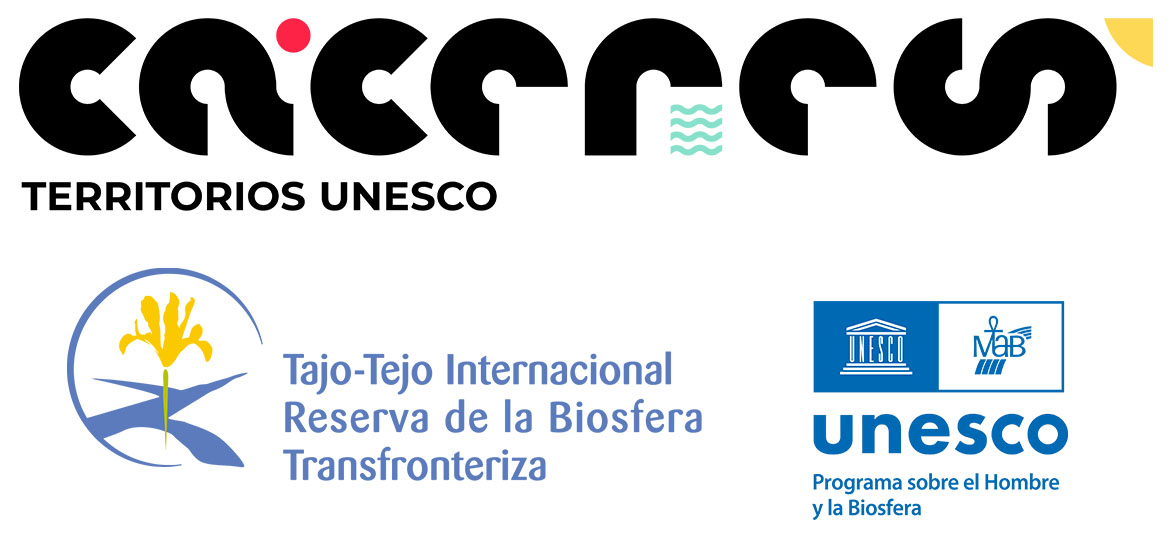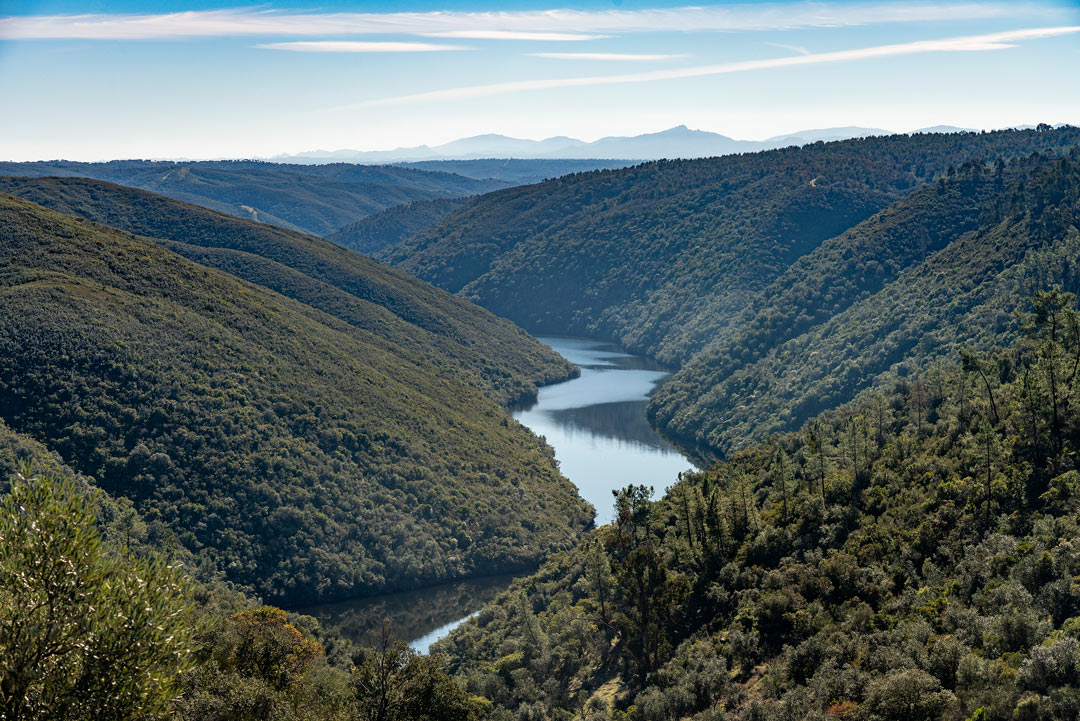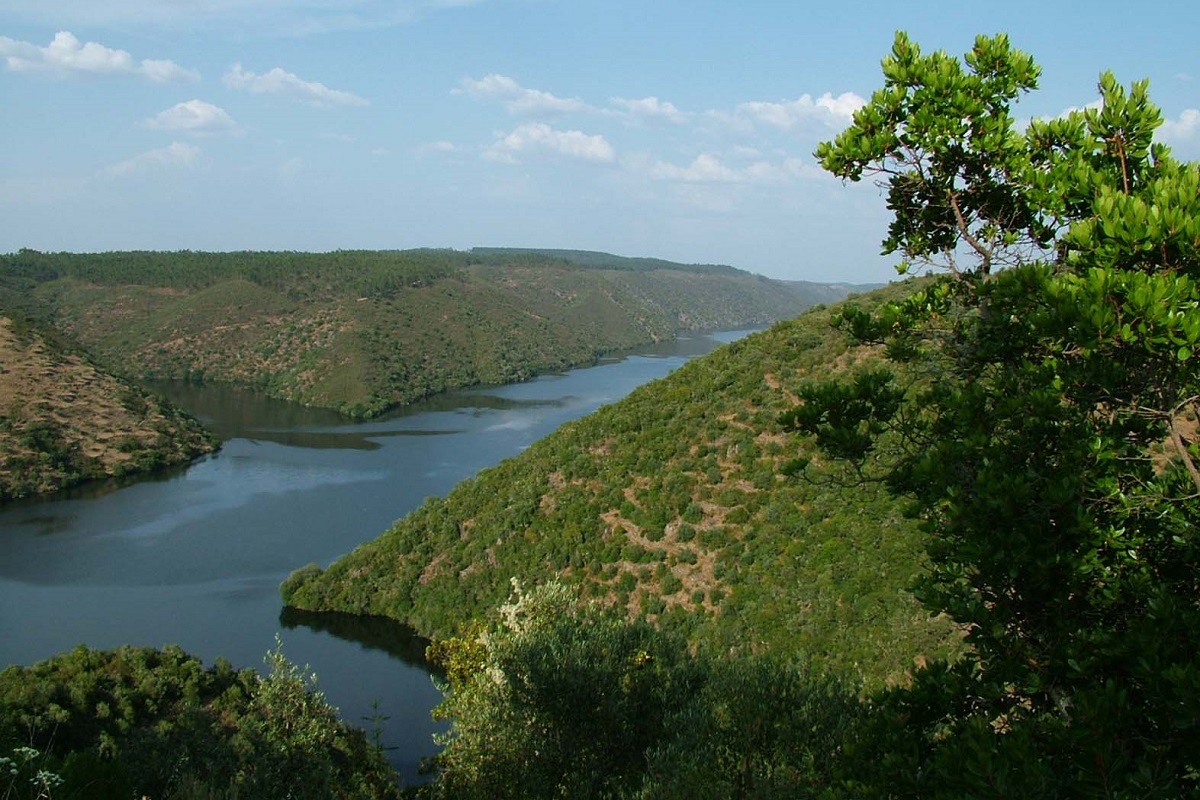Tajo Internacional Biosphere Reserve
A protected ecosystem
The Tajo Internacional Biosphere Reserve is subject to numerous forms of protection which are recognised at a regional, European, and world level. The main objective of all of them is to guarantee the conservation of the natural and cultural values of this frontier land.
The Natura 2000 European Ecological Network, the Tajo Internacional Nature Reserve in Spain and the Tejo Internacional Nature Reserve in Portugal, the Tajo-Tejo Internacional Nature Reserve, and the Tajo-Tejo Internacional Cross-border Biosphere Reserve are the main protected areas to be found in this territory.
Tajo-Tejo Internacional Cross-border Biosphere Reserve (2016)
Tajo/Tejo Internacional Nature Reserve (2013)
Tajo Internacional Nature Reserve in Extremadura (2006)
Tejo Internacional Nature Reserve in Portugal (2000)
Berrocal de la Data Natural Monument
“Charca de Brozas” Conservation and Leisure Periurban Reserve
Plus a number of places included in the Natura 2000 European Network: 9 Special Bird Protecttion Areas (Zonas de Especial Protección para las Aves, ZEPAs), 14 Special Conservation Areas (Zonas Especiales de Conservación, ZECs) in Spain, and 1 Special Protection Area (Zona de Proteção Especial, ZPE) in Portugal.
The Tajo Internacional Biosphere Reserve is a territory of particular relevance located in the west of the Iberian Peninsula and shared between Spain and Portugal, of which the main axis is the course of the River Tajo. It is an area of low altitude but rugged relief as a consequence of the embedment of the Tajo and its main tributaries (Sever, Pónsul, Aravil, Salor, and Erjas) on the edge of the peneplain.
This natural area is a highly representative sector of the Mediterranean ecosystem in which a rational and sustained exploitation of its natural resources has been carried out, which has allowed the maintaining of high biodiversity (here some 300 species of our most representative Mediterranean fauns find a refuge together with over 900 plant species) and particularly valuable and striking cultural assets with a strong frontier character.
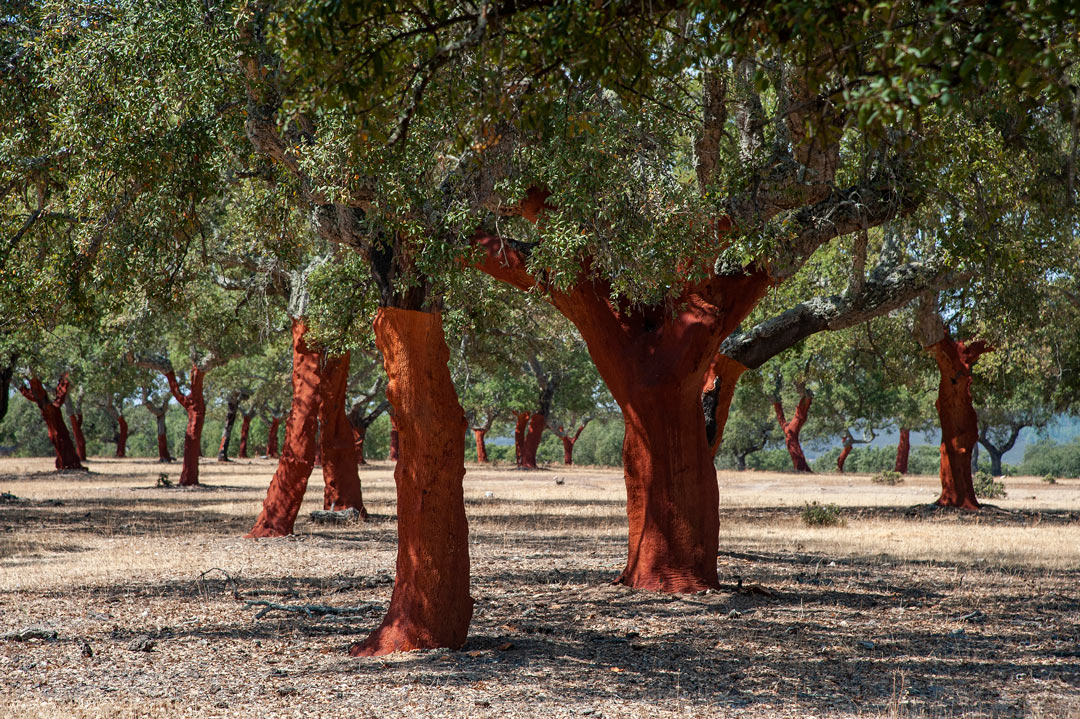
An extensive dehesa
The River Tajo determines the relief of this magnificent territory. On its banks originate extensive dehesas in which you will find a wild landscape full of holm oaks, cork oaks, thickets, and the sounds of a multitude of birds. A unique ecosystem. In addition to the Tajo its tributaries the Erjas, Aravil, and Ponsul to the north and the Salor and Sever to the north meet in these lands. All this circuit of water generates nature overflowing with diversity and colour.
The black and Egyptian vultures, the imperial eagles, and the red deer move on an invisible line between Spain and the Beira of Portugal. A territory with a very low population density and a livestock exploitation which respects the environment mean that today we can enjoy unspoilt nature full of nuances; a territory only suitable for true nature-lovers ready for a unique experience.
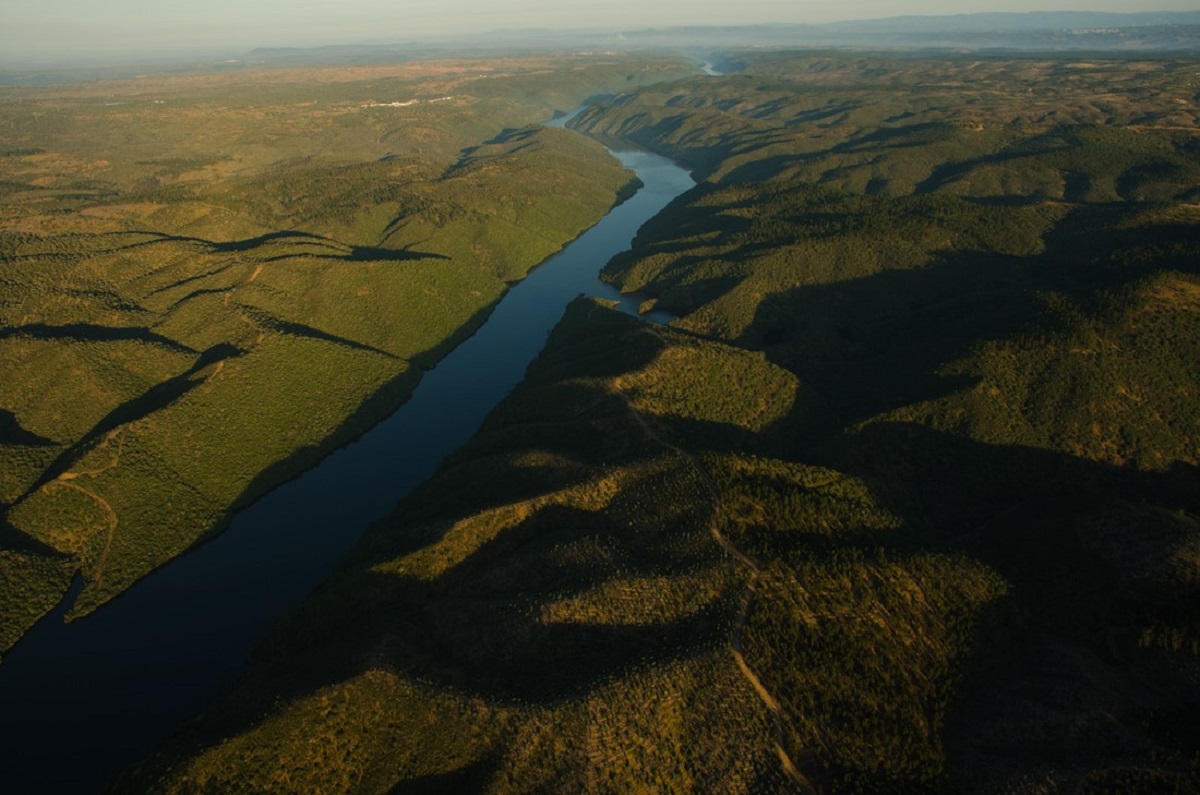
A home for birds
The Spanish imperial eagle, Bonelli’s eagle, the shy black stork, the black vulture, the Egyptian vulture, the lesser kestrel, the great bustard, and the little bustard ride the winds of the Tajo Internacional Biosphere Reserve; without forgetting the eagle owls, little owls, Montagu’s harrier, and stone curlews.
Any time of the year is ideal for enjoying this spectacle of nature. Activity is more intense in spring because it coincides with the breeding season of these animals. Moreover, autumn and winter are the seasons for admiring the migrations of certain birds such as cranes. A true spectacle in the unique ecosystem of the Tajo Internacional Biosphere Reserve.
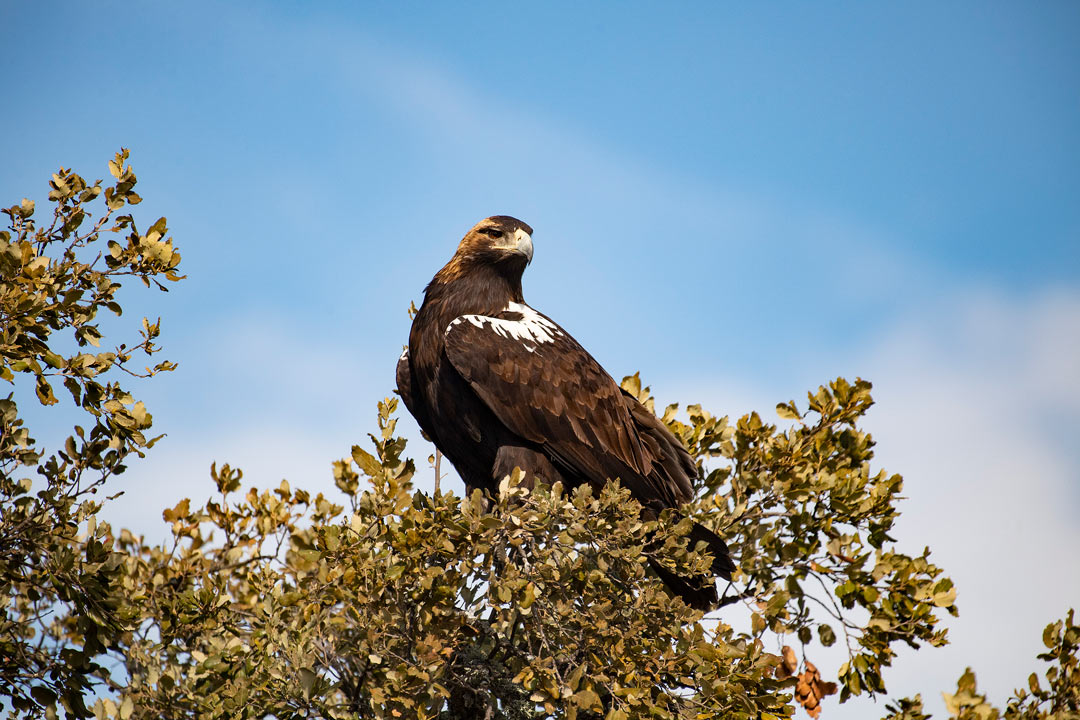
The rut
The last days of summer are when the rut begins for male red deer and fallow deer. Autumn rains will not now be long and the silence of the Tajo Internacional Biosphere reserve is broken with the impressive fights of these animals.
The Sierra de San Pedro is the ideal environment for enjoying this spectacle. The bellows can be heard particularly well in the darkness of the night, but it is at dusk and at nightfall when these spectacular disputes can be observed.
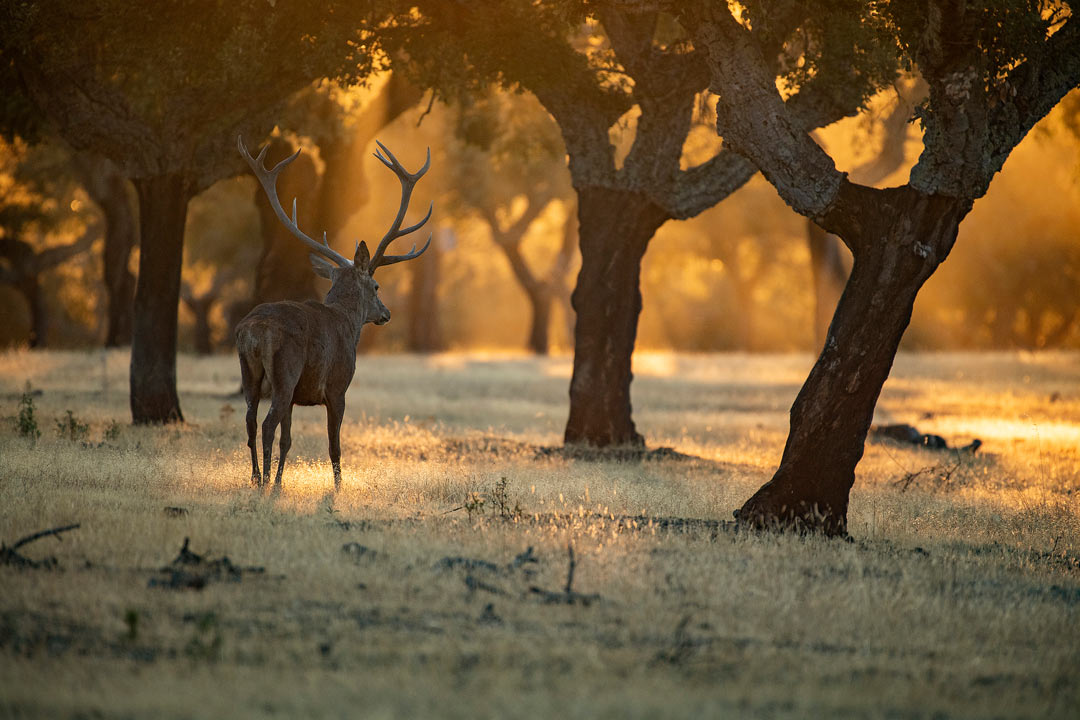
The diversity of the fauna
Although the birds are the kings of the sky and are of great importance in the nature reserve and the Biosphere Reserve, the territory holds a large number of other animals which are characteristic of the area such as the Iberian emerald lizard, Cabrera’s vole, the Iberian frog, and the European pond turtle. On the river banks the shy otter is often seen owing to the clean waters.
The waters of the Tajo are also inhabited by autochthonous fish such as the Iberian barbel, the Iberian nase, Luciobarbus bocagei, and Cobitis paludica which frequent shallow freshwater.
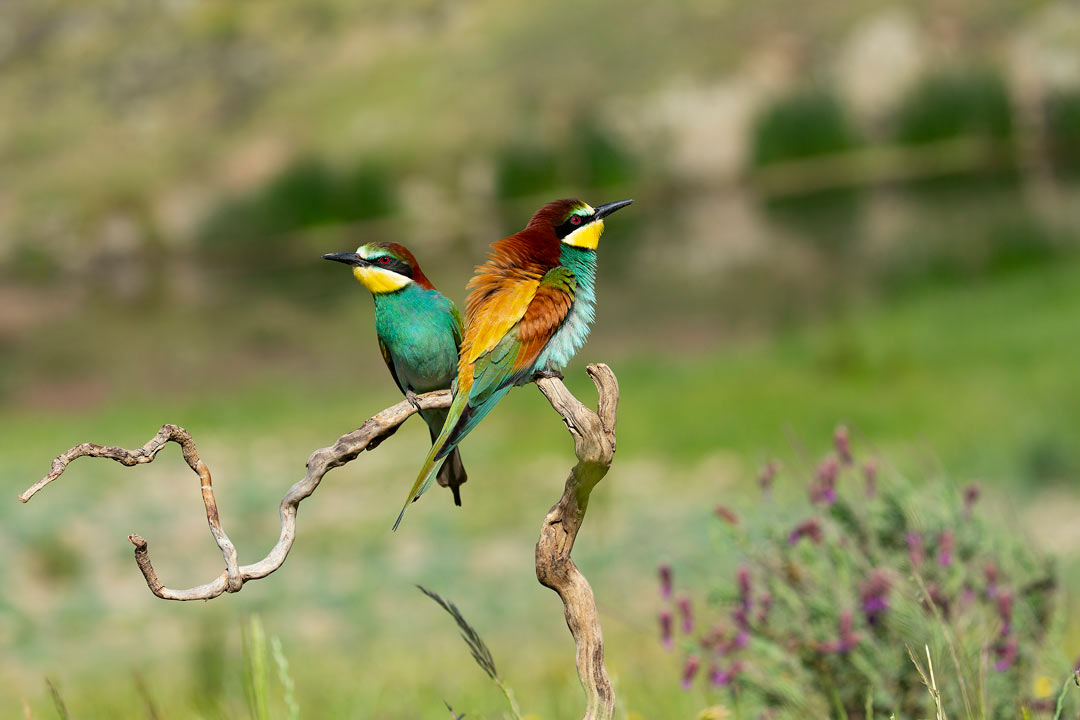
The rich and varied flora
Holm oaks and cork oaks crown the Tajo Internacional Biosphere Reserve in the typical dehesa landscape. Moreover, scrubland and pastureland abound. The yellow flag, a symbol of the Tajo Internacional Biosphere Reserve, grows in this area together with certain species of orchid, some of which are endemic.
In spring the variety of the flora provides a true explosion of colour thanks to the flowering of the heather, rockroses, hawthorns, and orchids. In autumn the countryside turns ochre, reddish, and yellow and the beauty of the strawberry trees, holm oaks, terebinths, and laurustinus is particularly striking.
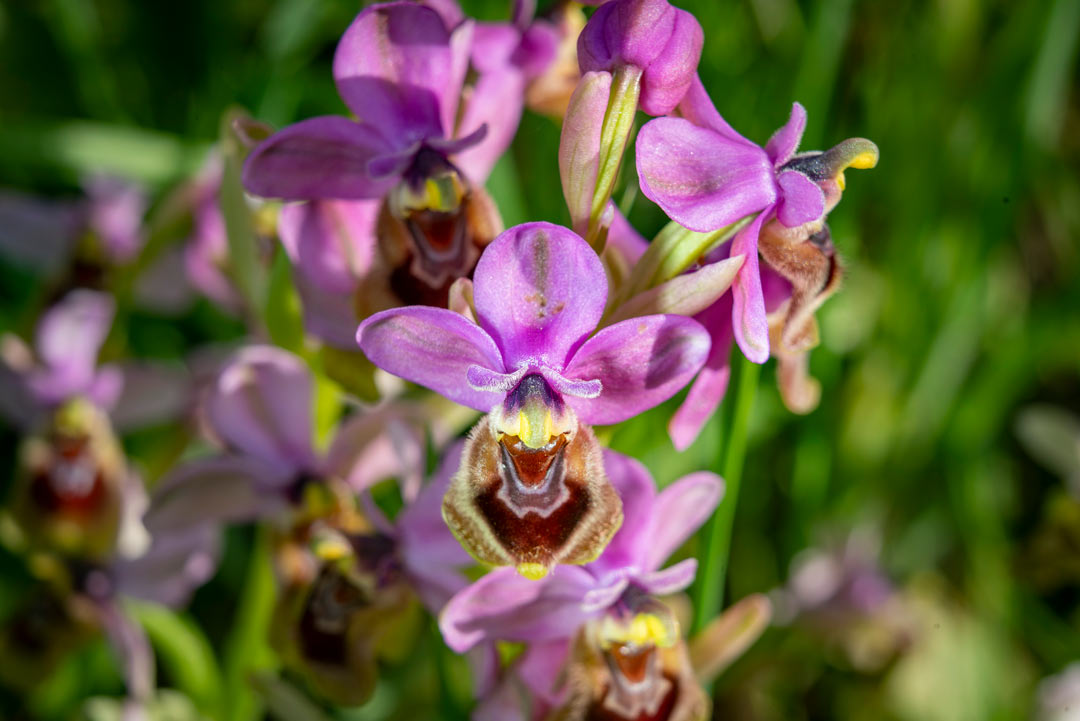
Tajo Internacional Nature Reserve Interpretation Centre
This centre, which is located in the town of Alcántara, is a 16th-century stately home popularly known as “Casa Natalio”. It gives full information on the Nature Reserve and the Tajo Internacional Cross-border Biosphere Reserve, its natural and cultural values, its routes, and its villages.
In its interior it has all kinds of didactic resources (interactive points, scale models, screenings, games, workshops, and environmental education activities) so that the visitor can share the values of this protected area.

